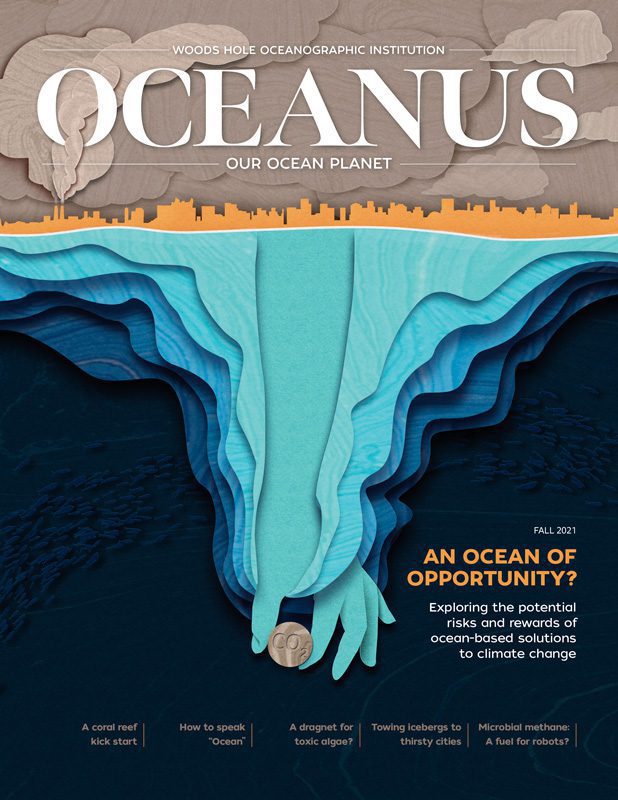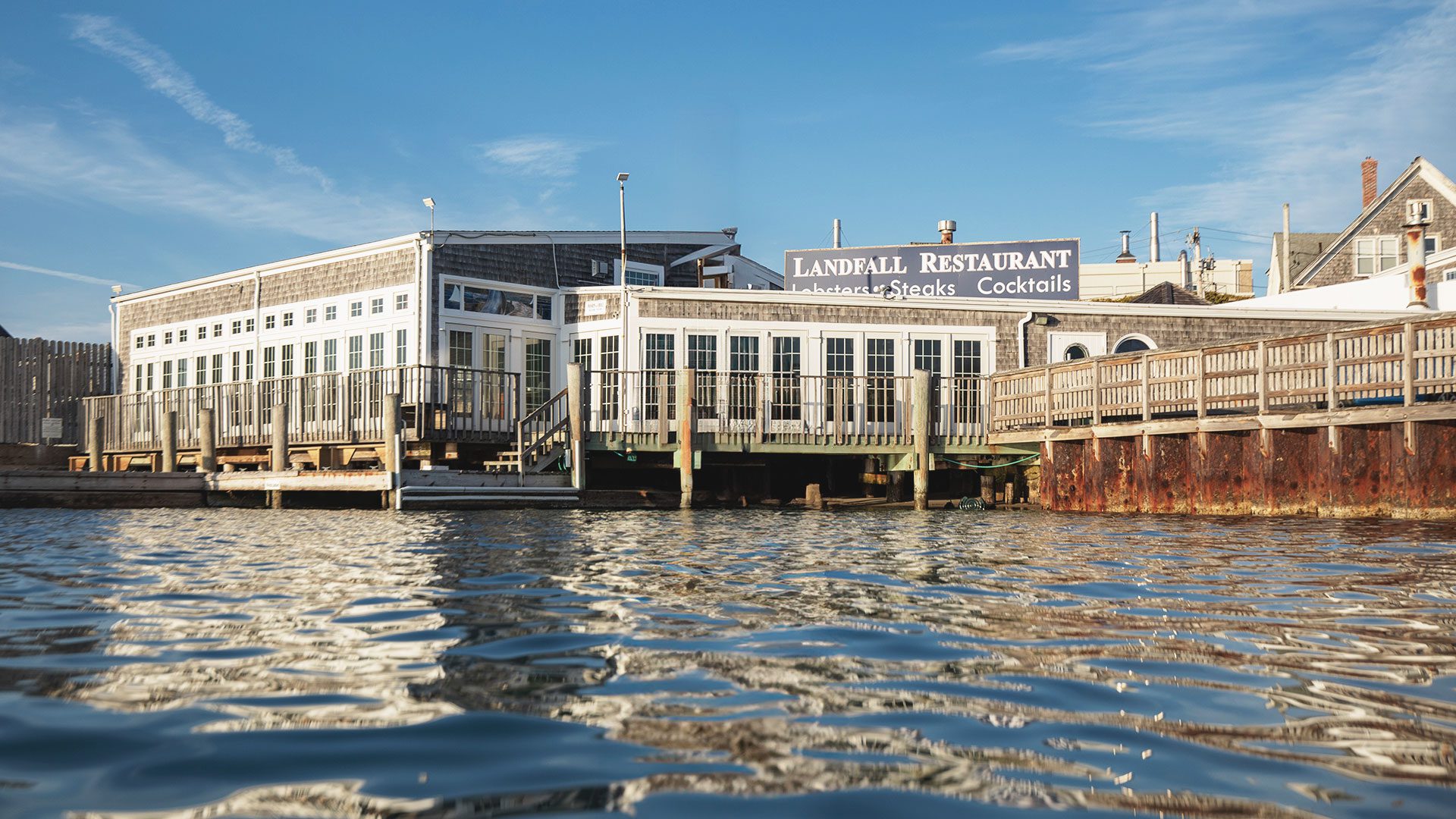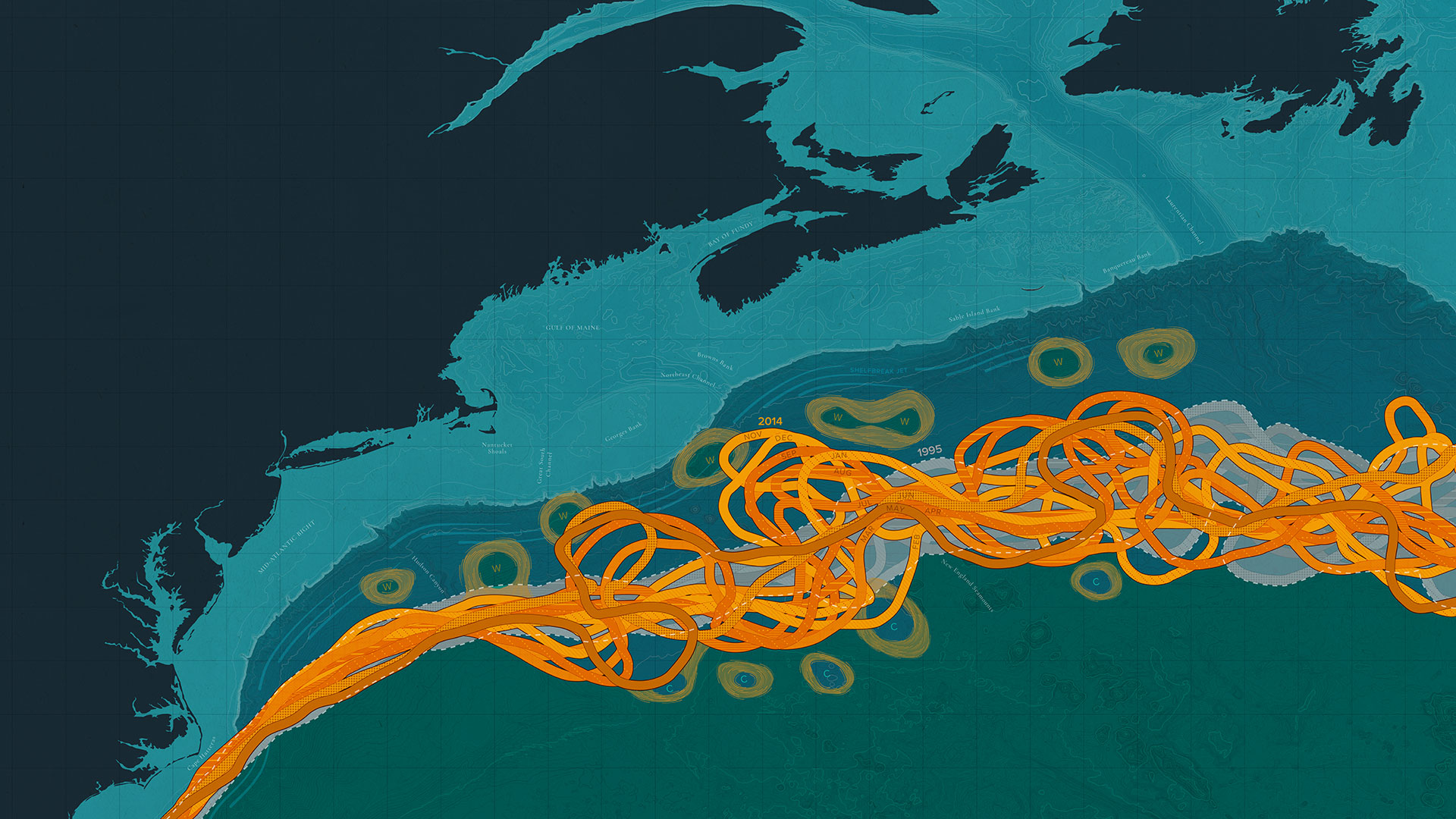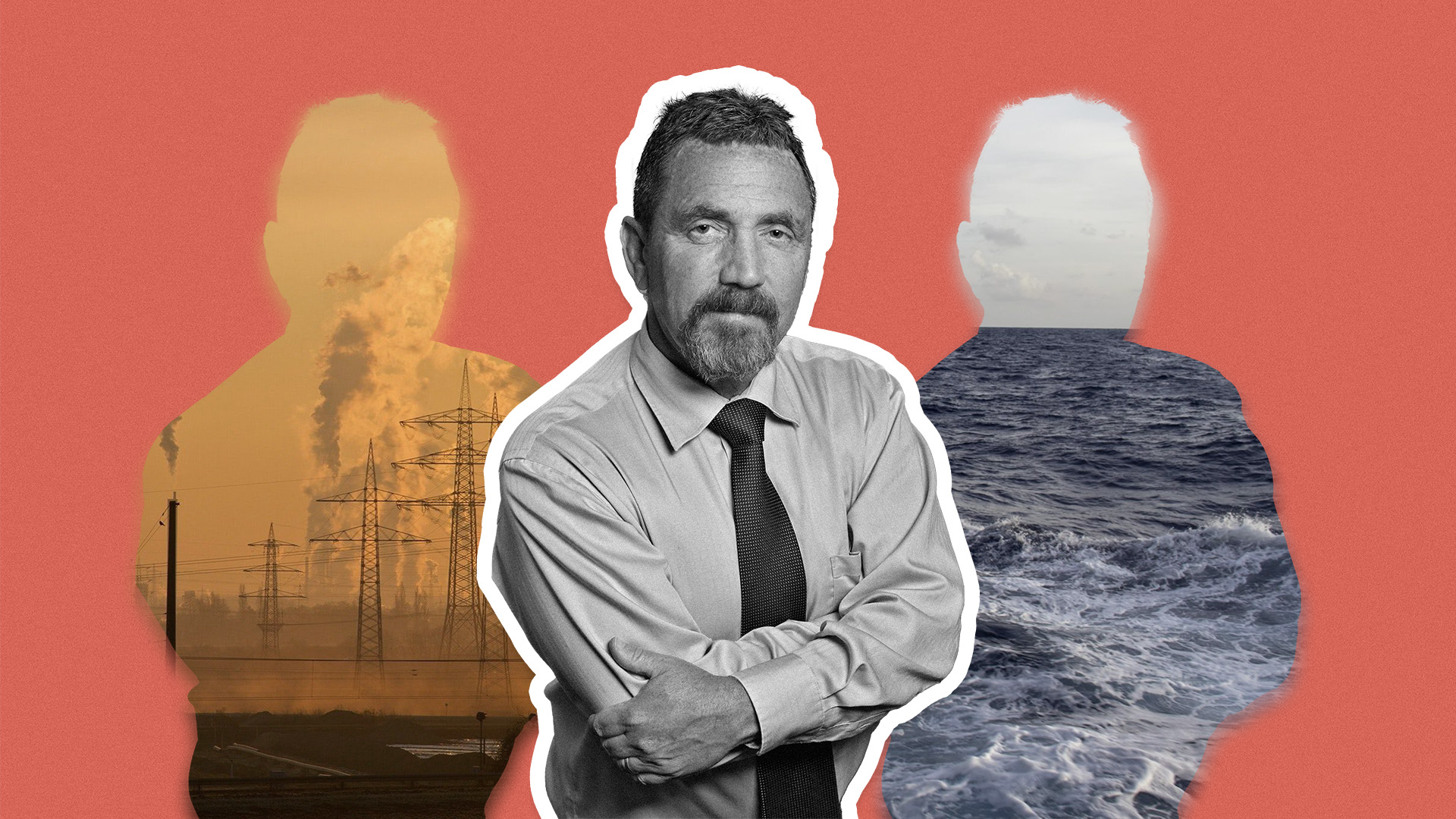
From the sound: A future powered by the sea
These two WHOI scientists discuss the promise of offshore wind and wave as renewable energy, and why WHOI is uniquely poised to make these safe and efficient forms of power
 This article printed in Oceanus Fall 2021
This article printed in Oceanus Fall 2021
Estimated reading time: 3 minutes

The power of offshore wind
Anthony Kirincich
As a coastal oceanographer, I study winds, waves, and tides in the ocean and how they affect the movement of water and things in the water, like nutrients, phytoplankton, or a distressed person floating in a life vest. What interests me about the coastal zone is that it's the part of the ocean that we as humans interact with the most, meaning that changes here can have an immediate impact on our daily lives.
The coastal ocean is a public resource, and we need to manage it wisely for many users, including commercial fishing, recreation, and offshore wind energy. Offshore wind, a new user of the coastal zone, is a source of green energy, but it's still an energy extraction activity that needs to be done without causing significant environmental harm. For marine mammals, for instance, noise from construction activities or increased ship traffic can be a big disturbance. However, scientists and industry can work to minimize this risk, which is probably less of a problem for marine mammals than climate change itself.
Scientists can help with wind energy development in several ways. First, we are the impartial scientific voice. We have the unique ability to tell the industry and the public about potential impacts to species and to the environment, among other things. Secondly, we can help transition new and emerging technologies to industry. While it's relatively easy for scientists to write a paper about a new way to measure something, it's vastly more difficult to make cutting-edge technology the new status quo in industry.
New technologies from WHOI might focus on a number of different areas of concern for the wind industry, ranging from the seafloor to the atmosphere. We are doing a lot of amazing proof-of-concept testing on cool things that could benefit offshore wind development. Our scientists are well positioned to help, whether it is using acoustic buoys or infrared cameras on drones to spot whales and minimize noise impacts, studying corrosion on wind turbine foundations, remotely sensing the seafloor to detect boulders that could stop offshore pile-driving activities, or sensing and numerically modeling winds to improve wind-energy forecasting.
I think we're moving in the right direction with offshore wind energy off the U.S. East Coast. We can work to collect more data to make sure offshore wind doesn't have negative impacts and to know when to make course corrections.

Harnessing wave energy
Megan Carroll
I'm working on a system that can harvest energy from ocean waves. The ocean is constantly moving on a 24/7 basis, so there's a great deal of potential. Wave energy technology has been developed in places like Europe and Australia, but here in the U.S. it's relatively new and hasn't been successful yet, like other forms of renewable energy such as wind and solar.
The system is designed to be mounted to an ocean buoy and sits above the water surface. Designing a system like this is quite challenging, since the ocean is a very harsh environment and buoys are constantly battered by waves and saltwater. The idea is to use the energy the system generates to power LEDs that will be used to prevent biofouling on sensors that sit below the surface. This will allow the sensors to stay in the water longer collecting data, which in turn will reduce the need to send a ship out to recover the buoy and clean the sensors as often.
In the next phase of development, we plan to finalize the design, build it, test it, get some results, and hopefully find success. Longer term, the goal would be to build several of these units to deploy out on multiple buoys across the world.
Getting involved in the project has really got me thinking more about the ocean as a solution for renewable energy beyond wind and solar. What I want to figure out is why wave energy hasn't been successful like wind and solar have been. When the wind stops, turbines stop. When sun goes down, you don't have solar energy. But the ocean never stops.



